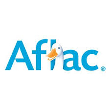2013 Healthnet ID Card Changes
There are some changes in Healthnet members receiving new cards for 2013.
Will receive a new ID card:
· All Arizona members, due to all members receiving new Health Net ID numbers
· Any member new to Health Net
· Any member with a plan name change
· Any member with a like plan change
Will not receive a new ID card:
· Any existing/active CA, OR or WA member not experiencing a plan change
If you have not received an ID card and are already a Health Net member AND did not sign up for a new plan, you will continue to use your old ID card.
Also note that physician names have been removed from ID cards. This way a member who changes their PCP and/or PPG need not wait for a new ID card to take to their physician’s office.
If you lose your card, change your address or your card is worn out, you can call us at (520) 721-4848 and we will request a new copy of your ID card be sent to you.
Once the card is requested, you can expect to receive their card in 7-10 days.

















